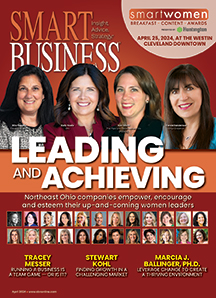
Every day, it seems the social media world is growing, making the physical world around us appear that much smaller. With those changes, the line that previously separated our personal and professional lives has blurred as websites and applications like Facebook, LinkedIn, Flickr and YouTube provide the ability to connect with family, friends and business colleagues and to share information, news, videos and photos.
So what exactly defines social media, and where is this new frontier headed? More important, how can we best take advantage of what’s out there?
Who better to answer those questions than Jeff Weiner, CEO of LinkedIn, the Web’s largest and most powerful network of professionals.
Social media means different things to different people as well as companies. What would be a good definition of social media?
Broadly defined, it is the creation of content, information and knowledge, distribution of it, consumption of it, and leveraging social interactions. Whether that’s a status update, sharing an image, a video or a blog post, even retweeting a headline or sharing a headline — those are all examples of social media.
I think the social interaction component, the virality, really takes what historically has been behavior we all have done offline, and when you bring it online and digitize it, it starts to scale and moves at a speed with which we haven’t seen previously. It really has the opportunity to change everything it touches.
So what do you see as the true cultural sea change that is being caused by social media?
This goes way beyond brand building and customer outreach, which is how many organizations are using social media. … Leveraging social platforms is going to fundamentally change the way we work and how business gets done. It’s going to really revolutionize and disrupt all of it. So whether it’s the way you hire people, find your dream job, transition from cold calling to warm prospecting by leveraging the power of first-, second- and third-degree relationships or whether it’s exchanging and sharing information, knowledge, insight and data that you need to derive insights to make better and more informed decisions, I don’t think people can really afford not to participate within these platforms.
Since it’s going to be everywhere, where would you start?
It starts with recognition. There are three behavioral changes we focus on the most at LinkedIn. First is the way in which we represent our professional identity. Think about that for a moment. The way in which individuals now build their professional brand starts with their profiles. And those profiles, when they’re kept fresh and relevant, are search engine optimized so that when people search for your name or the names of people like you with your experience, your skills, your aspirations, you’re the first thing they see when they do that search on Google.
This ability to carve out a piece of digital real estate that you, yourself, can control to put your best foot forward is an incredibly powerful and valuable dynamic. It’s not just the individual; it’s also your company. There are over a million active company profiles on LinkedIn. And these company profiles not only represent who you are and your company’s identity, but they enable you to build your talent brands, establish the way in which you’re going to recruit and how you recruit, and build word-of-mouth around your products and services. So identity is an absolute cornerstone.
The second is building your network. I think historically, when people hear the expression ‘professional networking,’ they think of the guy at the conference who is handing out as many business cards to people as possible, just building the Rolodex. That’s not what we mean anymore. We mean the way business gets done.
If we believe the world is getting flatter, more global, more digital, more networked, this is the way business gets done — it’s the way people are tapping knowledge, exchanging information — and if you’re not taking advantage of that and building out your network, your competition is.
And then lastly is the whole notion of sharing information and knowledge — collaborating, sharing business intelligence and competitive intelligence. To be able to really derive this kind of insight from whatever networks or social environments you’re operating in becomes an enormous advantage versus those folks who aren’t able to do the same.
You mentioned identity. How accurate do you think people or company’s identities are on the Internet? Who and what should we trust?
When you’re talking about a professional context, I think things change versus a social context. One of the first things people do when they meet in a professional setting is exchange business cards. The more your professional identity is out there, the more opportunities potentially accrue to you. It’s kind of a tried-and-true practice. So when you’re putting your profile out there for everyone to see publicly and transparently, the people who work with you and know exactly what you did, well, they’re going to call you out if you’re not telling the truth.
It’s very much self-policing in a professional context. The comments you see and the quality of interaction from people’s professional identities are very different than what’s shared outside of the professional context. It’s that important. If you’re sharing what you’ve done in a professional context or what your company is about, it’s perfectly transparent.

